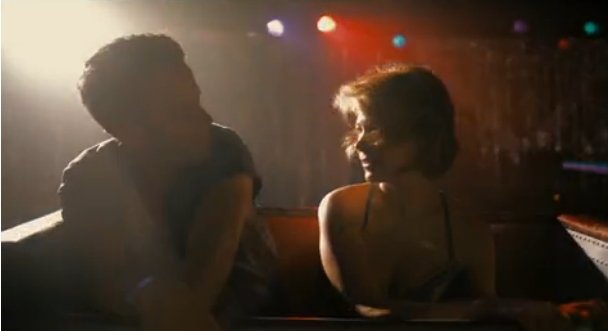With its sunny keyboard licks, driving bass drum and cooing “oh ah-oh” background vocals, The Buggles’ classic “Video Killed The Radio Star” is an irresistible tune—a jolt of one-hit wonder energy. The kind of song that, like “Take On Me” (a-ha) or “Come On Eileen” (Dexys Midnight Runners), can be relied upon to deliver a few moments of New Wave fun when you’re waiting in line at the grocery store or trying to push through an exercise routine.
It’s also a song that, beneath its shiny synth-pop exterior, is deeply nostalgic, even dark. Inspired by J.G. Ballard’s dystopian short story “The Sound-Sweep,” and the debut single off The Buggles’ “Age of Plastic,” a concept album about the effects of technology, “Video” is about a singer who has grown outmoded, and a fan who hasn’t forgotten. It’s about looking back on a better time and acknowledging that that time has permanently passed (“In my mind and in my car,/ we can’t rewind we’ve gone too far./Pictures came and broke your heart.”) There is, of course, a wonderful irony to the song’s sentimentality: “Video” was the first music video ever to air on a fledgling MTV on August 1, 1981, and ushered in the very changes it was lamenting. The song straddled two time periods; it disguised its nostalgia behind futuristic sunglasses and metallic suits. It has also been covered, sampled, and repurposed enough times that the darker notes of The Buggles’ version are easy to forget.
But those notes are coaxed out, to brilliant and surprising effect, in Take This Waltz, the new film from Canadian actor-turned-director Sarah Polley. The film follows Margot (Michelle Williams), an aspiring young writer who lives in comfortable boredom in Toronto with her husband, Lou (Seth Rogen, soft-spoken and straight-faced), and begins to question her marriage when she forms a connection with a handsome neighbor named Daniel (Luke Kirby). In their first real conversation, Margot tells Daniel “I don’t like being in between things,” but in between is exactly where she finds herself. The film lingers on Margot’s period of growing dissatisfaction and ambivalence as she indulges her new attraction—a late-night swim in the pool at the local gym, a coffee date on which she asks Daniel what he would “do” to her (and he answers in vivid detail)—even as she tries to pull herself back.
The film’s one major weakness is that Polley populates the story with heavy-handed metaphors and dialogue that sometimes makes the story’s themes overly explicit.
In her first directorial effort, Away From Her, adapted from the Alice Munro short story “The Bear Came Over The Mountain,” Polley delivered a sensitive, moving portrayal of romance racked by Alzheimer’s disease. Take This Waltz shows Polley similarly skilled at bringing troubled relationships to life (and Williams is, as usual, fascinating to watch). The film’s one major weakness is that Polley populates the story with heavy-handed metaphors and dialogue that sometimes makes the story’s themes overly explicit. Lou, for example, is a cookbook author who specializes in chicken recipes (read: he is the safe one). “He’s a really good cook,” Margot tells Daniel. “If you like chicken,” he replies. When Margot’s alcoholic sister-in-law, Geraldine (Sarah Silverman, in an affecting dramatic performance), discusses the comforts and frustrations of married life in the showers at the gym, two other women chime in and neatly articulate Margot’s dilemma: “Sometimes I just want something new, you know? New things are shiny,” says one. “New things get old,” says another.
But if Polley wrote her slow-paced, sensual story with Cohen’s smoldering baritone in mind, she achieved a less calculated sort of poignance with The Buggles’ poppy single.
Given all this underscoring, it’s especially satisfying to arrive at a scene that subtly captures the story’s emotional complexity without a single word being spoken. In the scene, Margot and Daniel ride The Scrambler at the amusement park on Toronto’s Centre Island while The Buggles blare along. The soundtrack choice was not a purely cinematic conceit: Polley, a Toronto native, has said in an interview that the real-life Scrambler operator at the Centreville amusement park often plays “Video” as an accompaniment to the darkly lit, strobe-streaked ride. Perhaps that’s why the song feels so organic yet so unexpected. The scene, around two minutes long, lurches from joy to seduction to sadness and back again. The centripetal force of the ride draws Margot and Daniel’s bodies alternately closer and farther apart; the moments of blissful escapism are undercut by flickers of sadness across Margot’s face as she seems to register the painful decision she’s facing. It might read as trite, I suspect (the proverbial rollercoaster of emotions), if not for the relentlessly upbeat yet dispiriting tune that narrates these rapid shifts and changes.
Another great soundtrack moment features the film’s namesake Leonard Cohen song, “Take This Waltz,” which is based on a surreal poem by Frederico Garcia Lorca and creates the sexy yet dirge-like background for one of the film’s most unusual (and erotic) sequences. Polley says she heard the song when she was first conceiving of her project, and that it informed the overall tone of the film. But if Polley wrote her slow-paced, sensual story with Cohen’s smoldering baritone in mind, she achieved a less calculated sort of poignance with The Buggles’ poppy single. Late in the film “Video” plays again in a second scene on The Scrambler, this time with Margot riding alone. In an interview with the Huffington Post Williams said she didn’t realize it was a sad song until she acted in the movie. Watching it leads to a similar revelation.

